珍惜人生,互助互爱
互相提携勉励;为我,为你,为我们的子孙后代在海外闯出美好的生活和成功的事业奉献自己的绵力。
正文
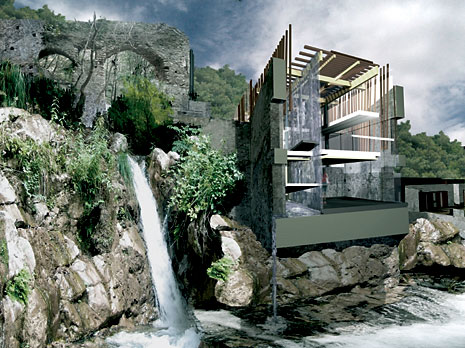 [Image: Center for Biodiversity by Tecla, part of the Waterpower project; via Domus].
[Image: Center for Biodiversity by Tecla, part of the Waterpower project; via Domus].There was an interesting, though brief, article posted on Domus last month about Italy's Valle dei Mulini, which Domus describes as "a fascinating microcosm of industrial history, dotted by abandoned paper mills."
Inorder "to prevent this heritage from disappearing," a local planningand design group, calling itself Waterpower, "asked a series of Italianand foreign designers to make projects for the renewal of the desertedwater and paper mills. There was one condition: that they take the'power of water' as the poetic metaphor and technological guideline oftheir projects, turning the valley into an eco-sustainable environment."
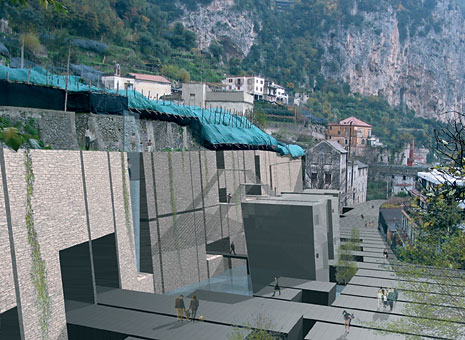 [Image: A parking garage and "river remodelling" structure by Labics, part of the Waterpower project; via Domus].
[Image: A parking garage and "river remodelling" structure by Labics, part of the Waterpower project; via Domus].Theresulting proposals look at programmatically different reuses of theold mills, including purposes as diverse as a youth hostel (completewith water from the Canneto River flowing through part of thebuilding), a Center for Biodiversity –
 [Image: The Center for Biodiversity by Tecla, via the Waterpower project].
[Image: The Center for Biodiversity by Tecla, via the Waterpower project].–newly cultivated "lemon terraces," a spa, a kind of outdoor historicalwalkway, a "Waterfall Home" deeply fixed into the bedrock, completewith some kind of Slow Food studio/kitchen –
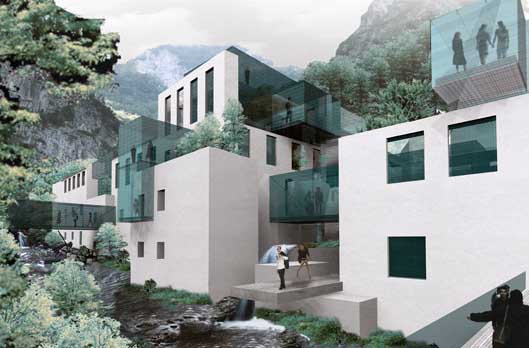
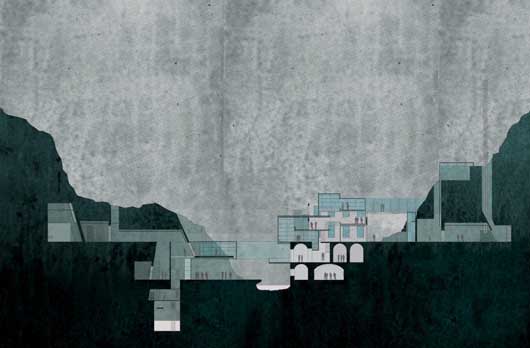 [Images: The Waterfall Home by Nemesi, via the Waterpower project].
[Images: The Waterfall Home by Nemesi, via the Waterpower project].– and a hydraulics museum.
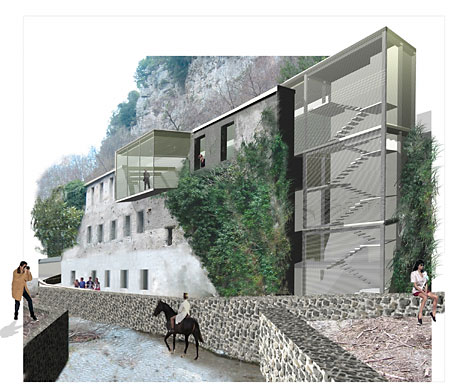 [Image: A "Hydraulics Museum & Panoramic Bar" by Sudarch, part of the Waterpower project; via Domus].
[Image: A "Hydraulics Museum & Panoramic Bar" by Sudarch, part of the Waterpower project; via Domus].The Waterpower website has a lot more information about the various projects, including a short history of the Valle dei Mulini itself.
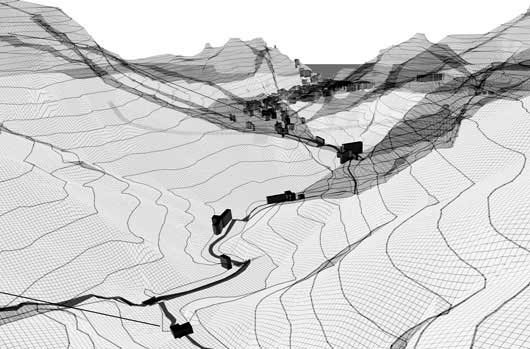 [Images: A topographical view of the Valle dei Mulini, via the Waterpower project].
[Images: A topographical view of the Valle dei Mulini, via the Waterpower project].We read, for instance, that the project "aims to recover a landscape and a system of pre-industrial water mills (mulini) currently in danger of collapse beyond repair."
- As described with a wealth of illustrations in Diderot and D'Alembert's Encyclopedie,from the early 13th century the paper mills, iron mills, and laterhydro-electric power stations exploited water power through ingenioussystems of channels, tanks, level drops, funnels and water wheels toproduce energy to make things. The mills were carefully distanced onefrom the next to exploit the height differential and hence the waterpower. From the port of Amalfi the network of mills rises 3km inlandand 350m in height.
In any case, I think it's a cool project. Read more at the official website.
评论
目前还没有任何评论
登录后才可评论.




